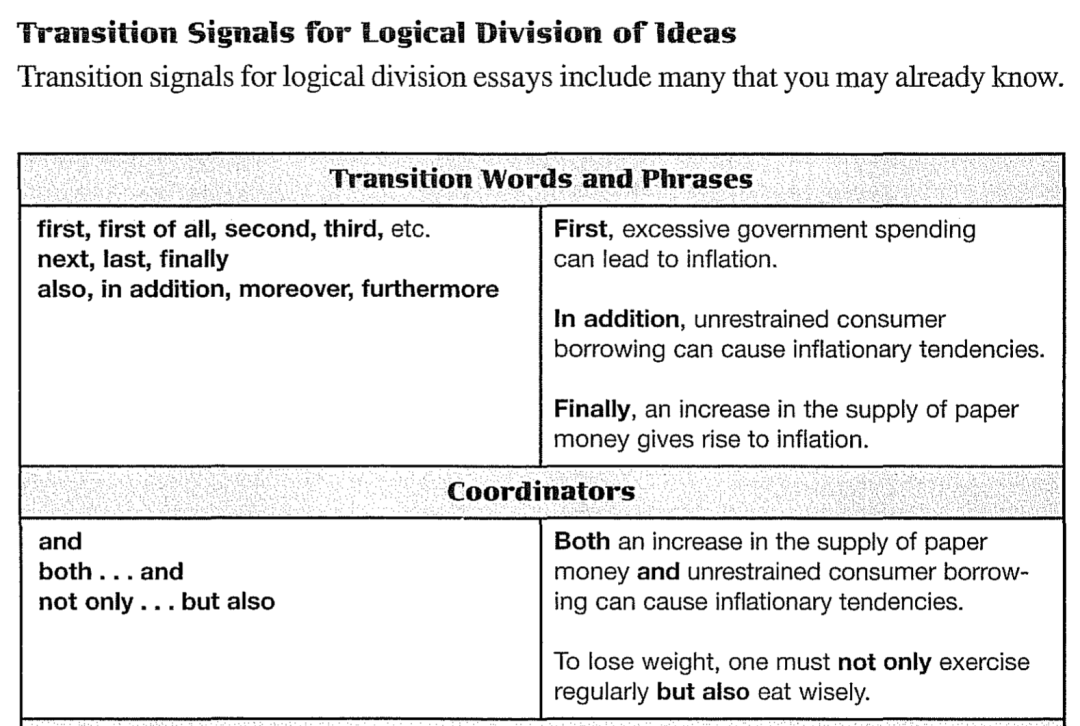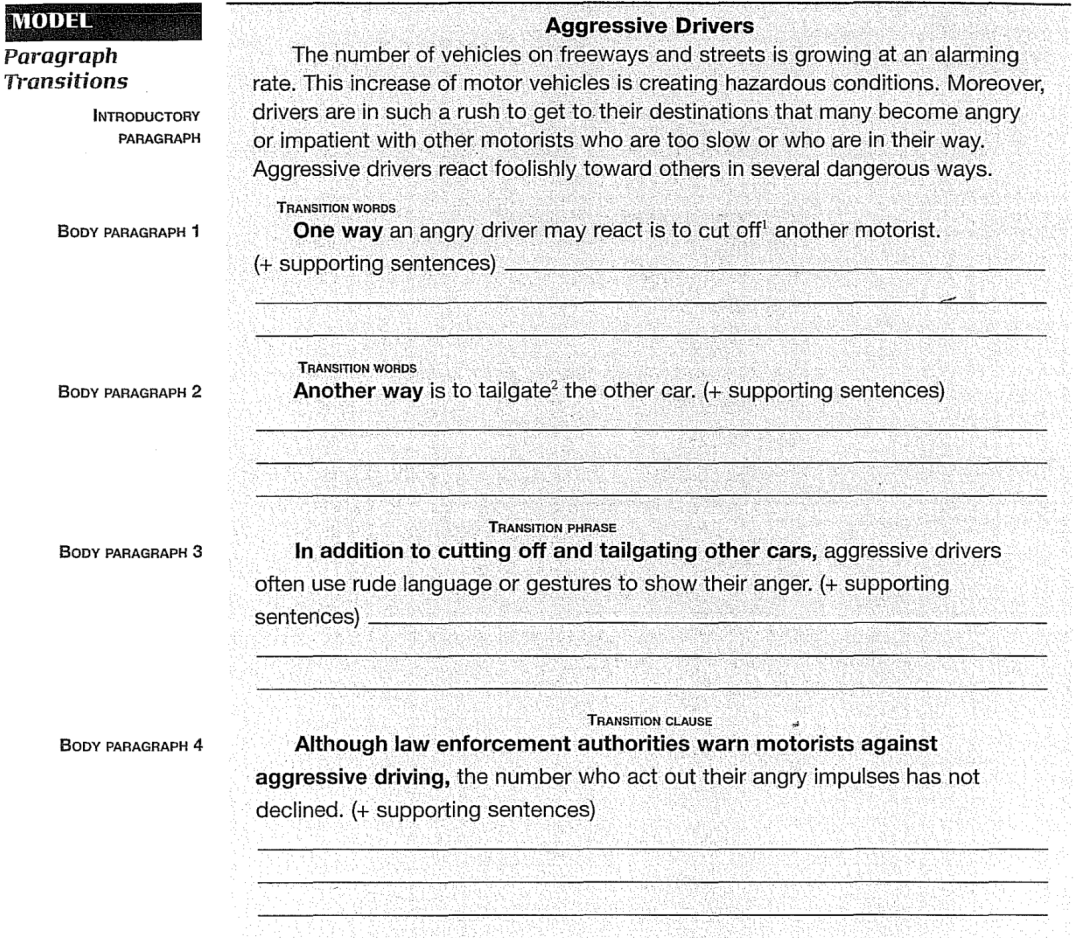留学生英文学术写作如何做好逻辑分类?
想在英文写作中一秒变身“逻辑大神”。那么,到底如何做到呢?今天小编就来分享其中一个方法,便是在主体段中使用观点逻辑分类的方式。希望各位小伙伴能学以致用,需要论文代写吗?可以直接联系我们的客服哦

【观点逻辑分类的定义】
我们先来了解一下《Writing Academic English》针对它的定义:
|A basic pattern for essays is logical division of ideas. In this pattern, you divide your topic into subtopics and then discuss each subtopic in a seperate paragraph. Logical division is an appropriate pattern for explaining causes, reasons, types, kinds, qualities, methods, advantages, and disadvantages…
通过这一组定义,就像是往期探讨过的“分类法”一样,我们需要把一个大的写作主题分割或者分类成几个小的写作主题。比如在分析一个社会事件背后的原因之时,我们将其细分为原因一、原因二和原因三。再比如分析某个做法所带来的好处和坏处,我们将其细分为好处一和好处二,以及坏处一和坏处二等等。
在了解完“观点逻辑分类”的基本定义之后,那么我们应该如何做,才能够让整篇文章看起来更有逻辑?

【观点逻辑分类三大要点】
为了能让组织起来的整篇文章富有逻辑,《Writing Academic English》建议你做到以下三大要点:
|Here are three keys to organizing a logical division essay.
#1. Divide your topic into subtopics, and then discuss each subtopics in a separate paragraph.
#2. Write a thesis statement that indicates logical division.
#3. Use transition between paragraph to guide your reader from one subtopic to the next.
第一大要点:如前文所说,你需要把写作的大主题细分成小的子主题,并且要注意一个段落专注讨论一个主题。
第二大要点:要写出一个预示着逻辑分类的中心观点句(or 中心思想)。
第三大要点:在段落之间使用过渡信号词,来帮助引导读者从一个子主题,过渡到另一个子主题。
由于篇幅有限,我们将在今日的文章中专注于探讨第三个要点——在段落之间使用过渡词。
【段落之间过渡词大合集】
为了让自己的写作展示出一种段落与段落之间的流畅性,同时帮助读者们清楚地跟随着我们所展开的逻辑,我们会使用一些过渡信号词或者短语:

《Writing Academic English》
第一大类:Transition words or phrases(过渡词)
常见表达:
- first, first of all, second, third, etc.
- next, last, finally
- also, in addition, moreover, furthermore
举例:
a. First, excessive government spending can lead to inflation.
b. In addition, unrestraining consumer borrowing can cause inflationary tendencies.
c. Finally, an increase in the supply of paper maney gives rise to inflation.
第二大类:Coordinators(并列连接词)
常见表达:
- and
- both…and…
- not only…but also
举例:
a. Both an increase in the supply of paper money and unrestrained consumer borrowing can cause inflationary tendencies.
b. To lose weight, one must not only exercise regularly but also eat wisely.
第三大类:Others(其他类)
常见表达:
- the first cause ( OR reason, factor, etc.)
- the/a second problem ( OR result, advantage, etc.)
- one problem ( OR reason, important factor, etc.)
- another way ( OR reason, disadvantage, etc.)
- an additional problem (OR result, etc.)
- in addition to math and science, …
举例:
a. A second cause is an increase in the supply of paper money.
b. Regular exercise is one way to get fit and lose weight.
c. In addition to governmeng spending, unrestrained consumer borrowing can cause inflationary tendencies.

图片来源:视觉中国
【段落过渡词典型范例】
通过以上各种不同类型的具备过渡功能的词汇表达之后,想必各位能够感受到它们在帮助串联大主题细分后的小主题的功能吧?那么在使用它们的时候,一般出现在什么位置呢?
待我们一起阅读以下这个典型范例后,再总结这些过渡词常常出现的位置吧!

图片来源:《Writing Academic English》
标题:
Aggressive Drivers
首段:
The number of vehicles on freeways and streets is growing at an alarming rate. This increase of motor vehicles is creating hazardous conditions. Moreover, drivers are in such a rush to get to their destinations that many become angry or impatient with other motorists who are too slow or who are in their way. Aggressive drivers react foolishly toward others in several dangerous ways.
主体段一:
One way an angry driver may react is to cut off another motorist. (+ supporting sentence)…
(备注:cut off=drive in front of)
主体段二:
Another way is to tailgate the other car. (+ supporting sentence)…
(备注:tailgate=drive closely behind or on the tail of another car)
主体段三:
In addition to cutting off and tailgate other cars, aggressive drivers often use rude language or gestures to show their anger. (+ supporting sentence)…
主体段四:
Although law enforcement authorities warn motorists against aggressive driving, the number who act out their angry impulses has not declined. (+ supporting sentence)…
结尾段:
To conclude, aggressive drivers are endangering everyone because they create hazardous conditions by acting and driving foolishly. They should control their anger and learn to drive safely. After all, the lives they save could be their own.
通过以上这个范例,不知道各位是否发现了这些段落之间的过渡词的常见位置啦?它们通常被放置在一个主体段的中心句/主题句(topic sentence)之处,以一个词汇、词组甚至是从句的方式出现。
除此之外,下一个段落的中心句,还可以为上一个段落进行重复或者总结上一个段落的中心思想,以“承上启下”的方式来引导逻辑的自然过渡。比如在主体段三中,in addition to就把前两段的内容都进行了概括,表示司机们除了会有前两种危险行为以外,还有第三种危险行为,从而做到了第三种危险行为的自然过渡。

